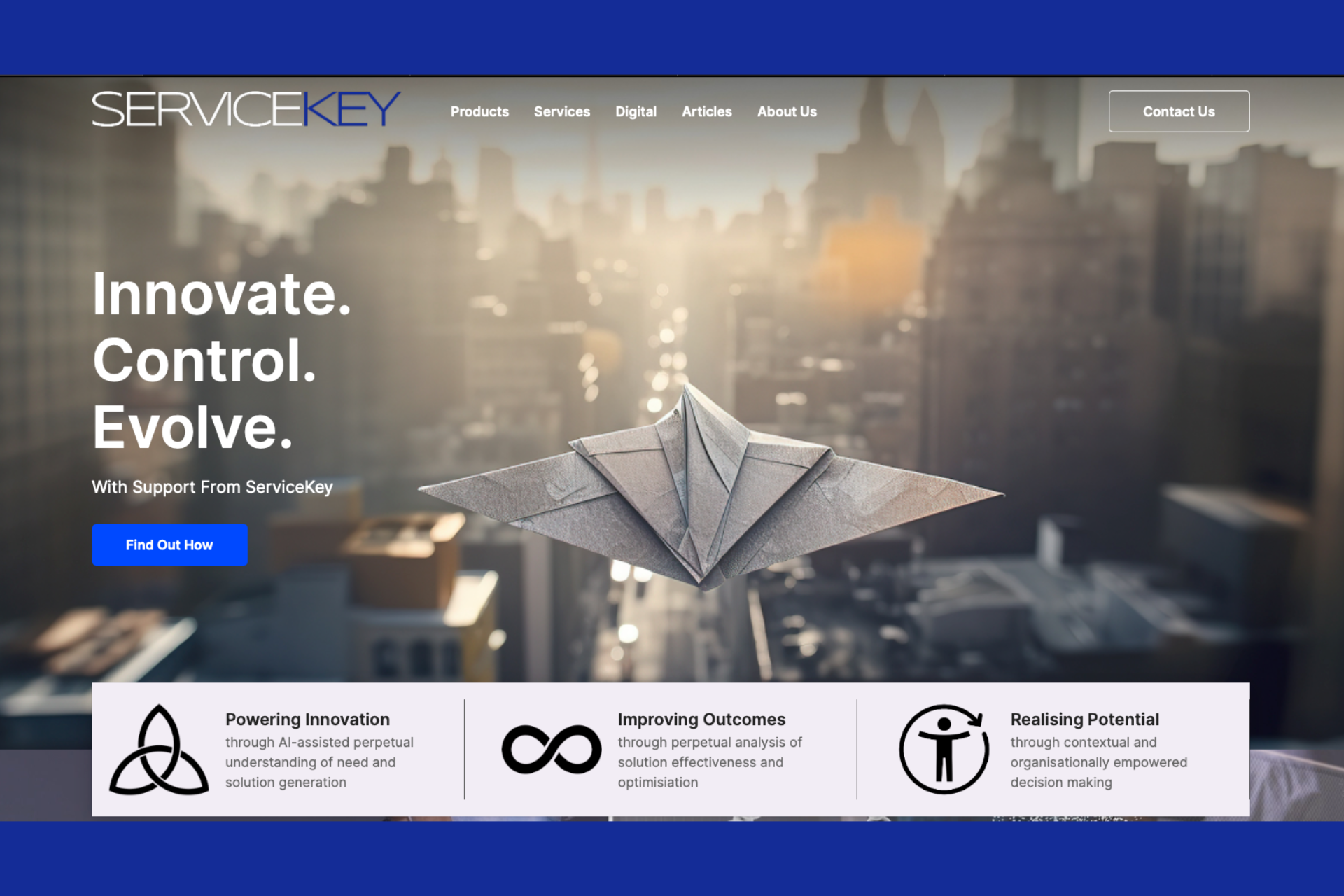As businesses strive to remain competitive in an ever-changing landscape, they continuously need to develop new solutions and strategies to improve performance and address their Customers’ needs. However, the challenge lies in knowing whether those solutions are genuinely effective in fulfilling those needs and making a positive impact.
In many cases, businesses rely on traditional metrics such as sales figures, customer satisfaction ratings, or employee productivity to measure the success of their services and solutions, often focusing on the success of these metrics rather than the fulfilment of the Customer need. While the metrics themselves can, and do, provide valuable insights, they frequently fail to capture the true impact of a service or solution and in many cases serve to drive unwanted behaviours into the Customer-Supplier relationship and could potentially lead to lost opportunities.
ServiceKey have developed a unique, innovative and perpetual mechanism for the measurement of effectiveness that goes beyond traditional metrics to consider the underlying elements of a business’s operations and how they contribute to the objective of meeting Customer needs. By examining each of these areas and combining them using the ServiceKey Effectiveness Evaluation, businesses can enhance their ability to deliver solutions that continuously evolve with the Customer needs.
Effectiveness is the key to control
The ServiceKey Effectiveness Evaluation, therefore, provides a comprehensive and in-depth analysis of a business’ effectiveness. This score is a weighted function of the three main components of a system: Execution, Supply, and Skills.
Execution refers to the actions taken by a business, i.e., what they do and how they do it. It involves processes, tasks, and operations that are undertaken to deliver a product or service to the customer.
Supply, on the other hand, involves the resources or inputs procured from the supply chain to facilitate the execution process. This can include raw materials, technologies, or even services from other vendors or partners that help the business do what it does.
The third component, Skills, considers the capabilities of the people within the business, including their expertise, know-how, training and the proficiency with which they carry out their tasks.
By evaluating each of these areas for five key parameters – Performance, Availability, Quality, Capacity and Cost – against a pre-determined baseline developed with the customer, the ServiceKey Effectiveness Evaluation can quickly and easily determine not only the overall effectiveness of the given solution, but also the area(s) which would have the greatest impact in the event of change.
Outcome Based Design is the mechanism for control
OBD is a methodology developed by ServiceKey that focuses on designing, transforming and optimising services with the ultimate goal of achieving outcomes in support of a Customer Need. It uses a blend of digital and physical tools to create a perpetual environment for measurement and improvement, allowing businesses to track and evaluate the effectiveness of their solutions continuously.
One key feature of OBD is the use of the ServiceKey Effectiveness Evaluation to determine the effectiveness of measured performance. For example, a business might develop a new app to improve its customers’ experience. Traditional metrics would track the number of downloads, user engagement, and revenue generated by the app. However, OBD would continuously consider how the app fulfils the Customer’s overall need, by evaluating areas such as reducing wait times (execution), improving accessibility through new technologies (supply), or providing more personalised services (skills).
Another essential feature of OBD is the ability to simulate different solution options and determine the most effective way forward. This allows businesses to test multiple scenarios and select the best solution based on real-world data. Once the solution is developed, OBD evaluates the service/solution readiness and determines potential solution options based on understood requirements. The real-world embodiment of solutions is combined with appropriate and timely measurement of key parameters to ensure the ongoing optimisation of effectiveness.
Overall, Outcome Based Design provides a design and delivery mechanism built around a perpetual and powerful tool for measuring and tracking the true impact of services and solutions, and the ability to understand the impact of change in near-real time. By focusing on outcomes and using the ServiceKey Effectiveness Evaluation to measure effectiveness, businesses can develop services and solutions that truly make a difference in their customers’ experiences.
The ServiceKey methodology offers a set of interlinked and perpetual tools that support innovation, control and evolution, and can be applied at any stage of a product, system, or service lifecycle. This methodology is centred around the development and exploitation of understanding, allowing organisations to identify and deploy solutions that evolve with their customers’ needs, ultimately improving operational effectiveness.





